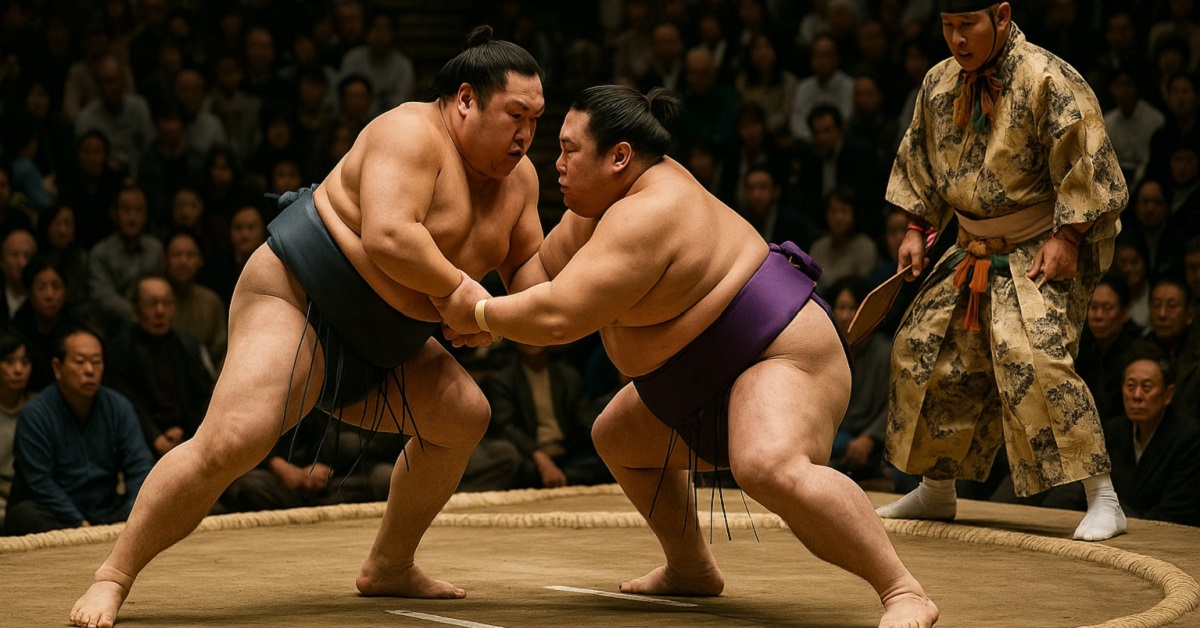Sumo is not only a sport in Japan but also a deeply rooted cultural ritual. Among the many forms of sumo, Ōzumō stands out as a structured, professional spectacle filled with centuries-old traditions. For those visiting Japan, understanding the difference between regular sumo and Ōzumō offers a unique insight into Japanese values and heritage.
- What Is Sumo? A Sacred Martial Art Rooted in Japanese Tradition
- What Is Ōzumō? A Structured Professional Sport
- Key Differences Between Sumo and Ōzumō
- Ōzumō Ranking and Characteristics
- Foreign Wrestlers and the Globalization of Ōzumō
- The Unique Experience of Watching Ōzumō
- Recommended Seating Types and Viewing Etiquette
- Conclusion
What Is Sumo? A Sacred Martial Art Rooted in Japanese Tradition
Sumo is a traditional Japanese martial art that emphasizes not only combat but also spirituality and etiquette. Its origin lies in Japan’s ancient Shintō rituals, where it was performed to pray for a bountiful harvest. Historical records from the Nara period include the “Sumai no Sechie,” a court ceremony involving sumo, demonstrating its long-standing connection to religion and state.
Sumo’s basic rule is simple: two wrestlers face off in a circular ring and attempt to push each other out or make the opponent touch the ground. However, before and after the bout, rituals like shiko (stomping), salt throwing, and bows are performed to purify the space, reflecting the sport’s spiritual nature. Even today, sumo is practiced at local shrines, schools, and community events, showing how deeply embedded it is in daily Japanese life.
What Is Ōzumō? A Structured Professional Sport
Ōzumō is a professional sport governed by the Japan Sumo Association. It evolved from temple offerings and street entertainment in the Edo period into a fully organized and commercialized system. Today, six official tournaments (honbasho) are held annually in Tokyo, Osaka, Nagoya, and Fukuoka, drawing spectators nationwide.
Wrestlers (rikishi) belong to sumo stables (heya) where they live and train under strict discipline. Their daily lives, attire, and even hairstyles reflect traditional Japanese culture. Rankings such as Yokozuna, Ōzeki, Sekiwake, Komusubi, and Maegashira are based on performance, and a rikishi’s status determines their income and privileges. In this way, Ōzumō is not only a sport but a living representation of cultural heritage.
Key Differences Between Sumo and Ōzumō
| Category | Sumo | Ōzumō (Professional Sumo) |
|---|---|---|
| Origin | Shintō rituals | Edo-period public entertainment |
| Management | Local groups, schools | Japan Sumo Association |
| Ranking System | None or informal | Formal ranking (Yokozuna to Jonokuchi) |
| Participants | Amateurs | Professional wrestlers (rikishi) |
| Rituals | Regionally varied | Standardized traditional rituals |
| Purpose | Cultural preservation, education | Entertainment, competition, cultural display |
Ōzumō Ranking and Characteristics
The ranks in Ōzumō reflect skill, consistency, and ceremonial responsibility. Each level comes with specific expectations and rewards.
| Rank | Description |
|---|---|
| Yokozuna | Highest rank, maintained for life, requires dignity |
| Ōzeki | Must perform consistently; demotion is possible |
| Sekiwake | Entry into upper ranks; performance is closely watched |
| Komusubi | Faces top-tier opponents regularly |
| Maegashira | Majority of top division wrestlers |
| Jūryō | First salaried rank; considered full professional |
| Below Jūryō | Unpaid, striving for promotion through consistent wins |
Foreign Wrestlers and the Globalization of Ōzumō
Once limited to Japanese nationals, Ōzumō now includes wrestlers from Mongolia, the United States, Georgia, and other countries. Legends like Hakuho and Asashoryu, both Mongolian Yokozuna, have achieved record-breaking success, raising international awareness of sumo.
Foreign rikishi must adapt to Japanese language, customs, and lifestyle, often living communally with strict rules. Yet those who succeed earn deep respect and play a vital role in increasing sumo’s diversity and global appeal.
The Unique Experience of Watching Ōzumō
Watching Ōzumō is not merely a sporting event—it is a cultural experience. Every movement, from salt throwing to the wrestlers’ entrances, carries symbolic weight. Spectators are expected to watch respectfully, honoring the spiritual and ceremonial atmosphere.
To accommodate international visitors, English guides, audio commentaries, and multilingual pamphlets are available. Events such as photo sessions with rikishi or retirement ceremonies (danpatsu-shiki) offer memorable encounters with Japan’s living traditions.
Recommended Seating Types and Viewing Etiquette
| Seat Type | Features |
|---|---|
| Ringside (Sunakaburi) | Closest to the action, high impact and intensity |
| Box Seats (Masuseki) | Traditional tatami mat, fits up to four people |
| Chair Seats | Standard Western-style, ideal for casual visitors |
| Special Seats | VIP, often with meals or souvenirs included |
Conclusion
Though they share the same origin, sumo and Ōzumō differ in structure, intent, and experience. Sumo preserves community tradition and spiritual heritage, while Ōzumō is a professionalized, nationally celebrated sport.
For foreign visitors, watching Ōzumō offers a window into Japan’s values, discipline, and aesthetics. Every gesture in the ring tells a story rooted in centuries of cultural continuity. By understanding both sumo and Ōzumō, one gains a fuller picture of Japan’s identity.





コメント